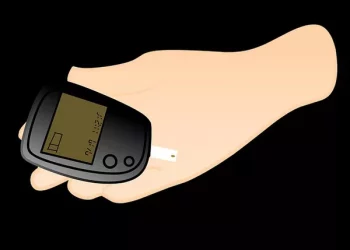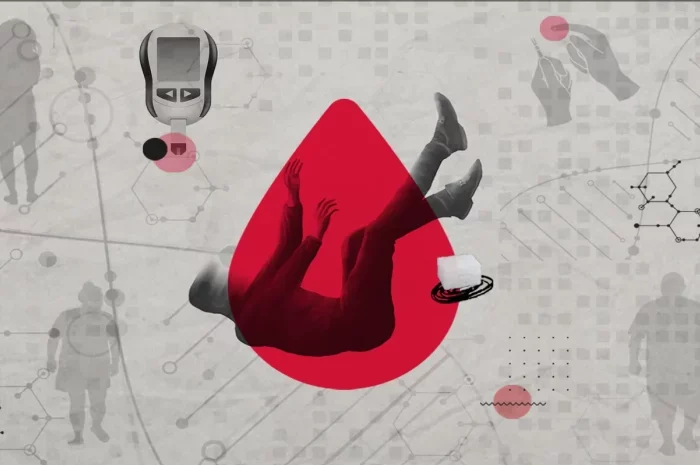Type 1 diabetes is a chronic autoimmune condition characterized by the body’s inability to produce insulin, the hormone necessary for regulating blood sugar levels. Unlike type 2 diabetes, which is often associated with lifestyle factors such as obesity and physical inactivity, type 1 diabetes typically emerges due to genetic predisposition and environmental triggers. While type 1 diabetes can manifest at any age, there are distinct patterns regarding the age of onset. Understanding these patterns is crucial for early detection, effective management, and improving outcomes for individuals living with this condition.
Early Onset: Childhood and Adolescence
One of the most well-known aspects of type 1 diabetes is its prevalence among children and adolescents. Historically referred to as “juvenile diabetes,” type 1 diabetes is often diagnosed in childhood, with peak onset occurring between the ages of 4 and 7 years old. However, diagnosis can occur at any point during childhood, from infancy to late adolescence.
The reasons behind the prevalence of type 1 diabetes in childhood are multifaceted. Genetic predisposition plays a significant role, with certain human leukocyte antigen (HLA) genotypes, such as HLA-DR3 and HLA-DR4, increasing susceptibility to autoimmune destruction of pancreatic beta cells. Environmental factors, such as viral infections and dietary components, may trigger autoimmune responses in genetically susceptible individuals, leading to the development of type 1 diabetes.
Early symptoms of type 1 diabetes in children and adolescents often include increased thirst and urination, unexplained weight loss, fatigue, and irritability. These symptoms can progress rapidly, leading to a diagnosis of diabetes within weeks or even days of their onset. Prompt recognition and intervention are essential to prevent life-threatening complications such as diabetic ketoacidosis (DKA).
Late Onset: Adulthood
While type 1 diabetes is commonly associated with childhood onset, it can also emerge in adulthood, albeit less frequently. Late-onset type 1 diabetes, sometimes referred to as “latent autoimmune diabetes in adults” (LADA) or “type 1.5 diabetes,” typically occurs after the age of 30, with peak incidence between 30 and 40 years old. However, diagnosis can occur at any point in adulthood, including well into the senior years.
The distinction between type 1 and type 2 diabetes in adults can be challenging due to overlapping clinical features. Unlike traditional type 1 diabetes, which often presents with rapid onset and pronounced symptoms, LADA may initially resemble type 2 diabetes, with gradual onset and milder symptoms. However, individuals with LADA typically have autoimmune markers, such as positive antibodies against pancreatic islet cells or insulin, indicating an underlying autoimmune process.
Late-onset type 1 diabetes is believed to result from a combination of genetic susceptibility and environmental triggers, similar to its childhood counterpart. While the exact triggers may differ, viral infections, stress, and other environmental factors can precipitate autoimmune destruction of pancreatic beta cells in susceptible individuals, leading to the onset of diabetes.
Diagnosis Challenges and Considerations
Diagnosing type 1 diabetes, particularly in its early stages, can be challenging due to its variable presentation and overlap with other conditions. In children, symptoms such as increased thirst and urination may be dismissed as normal childhood behavior or attributed to other causes, delaying diagnosis. Similarly, in adults, the gradual onset of symptoms and the presence of risk factors for type 2 diabetes may lead to misdiagnosis or delayed recognition of type 1 diabetes.
Healthcare providers must maintain a high index of suspicion for type 1 diabetes, especially in individuals with risk factors such as a family history of the condition or autoimmune disorders. Laboratory testing is essential for confirming the diagnosis, with measurements of blood glucose levels, glycated hemoglobin (HbA1c), and autoimmune markers such as pancreatic islet cell antibodies (ICA), insulin autoantibodies (IAA), and glutamic acid decarboxylase antibodies (GADA) playing a crucial role in distinguishing type 1 diabetes from other forms of diabetes.
In cases where the diagnosis is uncertain, further testing, such as c-peptide levels to assess endogenous insulin production, may be warranted. Collaborative approaches involving primary care physicians, endocrinologists, and other specialists can facilitate timely diagnosis and appropriate management of type 1 diabetes, improving outcomes and quality of life for affected individuals.
Implications for Management and Treatment
Regardless of age at diagnosis, effective management of type 1 diabetes requires a comprehensive approach encompassing lifestyle modifications, pharmacotherapy, and regular monitoring. Early initiation of insulin therapy is a cornerstone of treatment, aimed at replacing the deficient hormone and achieving glycemic control. For children and adolescents, insulin therapy may involve multiple daily injections or insulin pump therapy, tailored to individual needs and preferences.
In adults with late-onset type 1 diabetes, treatment strategies may need to be adjusted to account for factors such as insulin resistance, concurrent medical conditions, and lifestyle factors. While insulin remains the primary treatment modality, adjunctive therapies such as oral antidiabetic agents or glucagon-like peptide-1 (GLP-1) receptor agonists may be considered in certain cases to optimize glycemic control and reduce the risk of complications.
Education and support are essential components of type 1 diabetes management, empowering individuals and their families to make informed decisions about their health. Diabetes self-management education programs can provide valuable guidance on meal planning, carbohydrate counting, blood glucose monitoring, and insulin administration, fostering self-efficacy and improving adherence to treatment regimens.
Regular follow-up with healthcare providers is critical for monitoring glycemic control, assessing for complications, and adjusting treatment as needed. Continuous glucose monitoring (CGM) systems and insulin pumps offer valuable tools for real-time glucose monitoring and insulin delivery, enhancing precision and flexibility in diabetes management.
Conclusion
The age of onset for type 1 diabetes spans the entire lifespan, from infancy to late adulthood, with distinct patterns observed in childhood and adulthood. While childhood onset is more common and often characterized by rapid progression and pronounced symptoms, late-onset type 1 diabetes presents unique challenges due to its overlap with type 2 diabetes and more gradual onset.
Early recognition and diagnosis of type 1 diabetes are essential for preventing life-threatening complications and optimizing long-term outcomes. Healthcare providers must maintain a high index of suspicion for type 1 diabetes, particularly in individuals with risk factors such as a family history of the condition or autoimmune disorders.
Effective management of type 1 diabetes requires a multidisciplinary approach encompassing education, support, and personalized treatment strategies tailored to individual needs and preferences. With early intervention and comprehensive care, individuals living with type 1 diabetes can lead full and fulfilling lives, minimizing the impact of this chronic condition on their health and well-being.



























